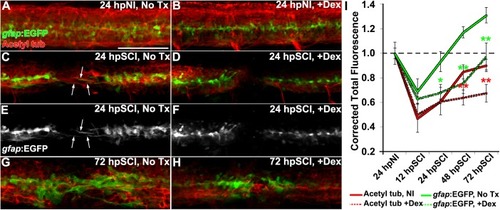FIGURE 4
- ID
- ZDB-FIG-190723-803
- Publication
- Nelson et al., 2019 - Glucocorticoids Target Ependymal Glia and Inhibit Repair of the Injured Spinal Cord
- Other Figures
- All Figure Page
- Back to All Figure Page
|
Glucocorticoids suppress glial bridges and axon regrowth. |

